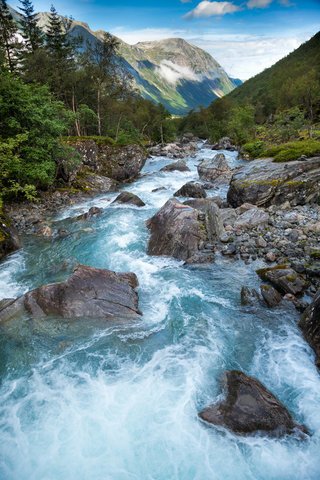Geoffrey Fryer’s impressive half century
2 August, 2022
By Martyn Kelly (1) & Catherine Duigan (2)
(1) Bowburn Consultancy / University of Nottingham; (2) University of Aberystwyth.
FBA Fellows Martyn Kelly and Catherine Duigan remind us of a significant anniversary in the history of the Freshwater Biological Association.
Edited by Rachel Stubbington, Nottingham Trent University
Rachel is both a Fellow of the Freshwater Biological Association and long-standing Editor of FBA Articles. If you would like to submit an article for consideration for publication, please contact Rachel at: rachel.stubbington@ntu.ac.uk
Introduction
Fifty years ago this year, Geoffrey Fryer (Figure 1), then a scientist at the FBA’s Windermere laboratories, was elected as a Fellow of the Royal Society. In 2022, now retired and living in Gloucestershire, he becomes part of a very small group (just 12 out of 1763) who have achieved a half-century of Fellowship. To put this into perspective, Geoffrey had been a Fellow for 18 years before mathematician Jack Thorne, the current youngest Fellow (32), was even born. This anniversary seems like a golden opportunity to look back on his scientific career and achievements.
Figure 1. Geoffrey Fryer, photographed in the 1960s. FBA archives.
Geoffrey Fryer’s education and early career studies at Lake Malawi
Born in Huddersfield in 1927, Geoffrey did an external degree, followed by a PhD, at the University of London. After National Service he was appointed by the Colonial Office as a fisheries officer in Africa. However, he had to complete a year-long Colonial Research Studentship before he could be posted abroad and was sent to the FBA’s Windermere Laboratory where, by his own account, he was left entirely to his own devices.
He spent the time studying the diet of freshwater crustaceans, using a microscope to watch living organisms feed and teasing out their guts to examine the contents. This meticulous close observation became his trademark and, as freshwater science became increasingly quantitative, he continued throughout his career to emphasise the importance of meticulous observation alongside merely counting and measuring as a means for understanding the link between morphology and function.
In 1953 Geoffrey boarded the Umgeni, a cargo-passenger liner (Figure 2), bound for Beira in Mozambique, from where he travelled by train to Blantyre in Nyasaland (now Malawi) and, from there, by car to Lake Nyasa (now Lake Malawi). Finally, he travelled by steamer along the lake to Nkharta Bay where a still-roofless laboratory awaited.
The entire journey took six weeks. Almost immediately, an unpleasant attack of dysentery laid him low for several days, but he was soon back on his feet and exploring his new surroundings. The water near the laboratory “teemed with a diversity of often brightly coloured cichlid fishes of small size … the water was beautifully clear and, because of the absence of the snails that served as intermediate hosts of Schistosoma … it was feasible to swim there and observe these fishes, especially if one wore a simple face mask”.
Figure 2. The Umgeni, the ship which carried Geoffrey Fryer to Africa for the first time in 1953. From www.tynebuiltships.co.uk.
This was the start of an immensely productive period in which his meticulous observations helped him to understand how habit and habitat interacted to allow the large number of cichlid fish (Figure 3) in this and other lakes in Africa to co-exist. These form “species flocks” akin to, but much more diverse than, the Galapagos finches. They had already attracted the attention of evolutionists and were the ideal subject matter for a diligent young scientist with an eye for detail.
His papers from this time (e.g. Fryer, 1959) are exemplars of a style of scientific writing rarely encountered now: rich in description and qualitative detail that provided essential foundations for later generations of geneticists. There was time, too, to continue his studies on small crustaceans – essential, in fact, as these were important food sources for several of the cichlids in the lake.
Figure 3: Cichlid fish from Lake Malawi. Top left: Pseudotropheus greshakei; top right: Ramphochroumus ferox; bottom left: Lethrinops sp.; bottom right: Copadichromus virginalis. Photo credit: Ken Irvine, Institute of Hydrology, Delft.
Lake Bangweulu
After two years at Nhkarta Bay, now accompanied by his wife Vivian, he moved to Lake Bangweulu in Northern Rhodesia (now Zambia) which, judging by his notes, did not hold as much fascination for him as the Great Lakes. Worryingly, this was also a time when fisheries scientists were contemplating introducing Tilapia and Nile Perch to the Great Lakes in order to improve fisheries. These were, at the time, achingly poor regions and there was a clear case for increasing the supply of protein. However, in a powerful piece of scientific polemic (Fryer, 1960), Geoffrey exposed the dangers of upsetting the delicate ecological balance that he and other fisheries scientists had slowly come to understand. We are now familiar with the problems that invasive species can bring to ecosystems, but this was 1960 and his paper was both pioneering and prophetic.
Micro-crustacea research at the Freshwater Biological Association
In 1960 he and Vivian travelled overland back to the UK where he took up a position at the FBA in Windermere where he remained until he retired. His primary research interest during these years were the micro-crustacea (e.g. Fryer, 1962, 1963, 1968) although his interest in cichlids never left him. He was still contributing vigorously to discussions about their evolution into his retirement, but now with molecular as well as morphological evidence with which to grapple (Fryer, 2006).
For both fish and crustaceans, he was never interested in taxonomy as a sterile, self-contained discipline. Rather, he wanted to understand how the morphology of organisms influenced their habits and adapted them to particular circumstances. He used detailed drawings (Figure 4) to both understand and communicate these adaptations and was a very skilled microscopist, especially when it came to lighting the specimens he wanted to draw. His monographs on morphology are a pleasure to look at and represent an important contribution to our natural history heritage in terms of scientific artistry and accuracy.
Figure 4. Some of Geoffrey Fryer’s drawings of crustaceans. Top left: Polyphenus pediculus; top right: Sida crystallina; bottom left: Acantholeberis curvirostris; bottom right: Bosmina longirostris.
Notable observations
Geoffrey strongly believed that morphology contained the clues needed to unravel ecological and evolutionary patterns: “As old inhabitants of freshwater, chydorids must long ago have made the physiological adjustments necessary to allow them to tolerate such differences in their chemical environment as are generally experienced. The claim is therefore made that structural features and the habits with which they are inseparably linked, together with biotic factors, such as the presence of particular predators, are in general more important than chemical factors in the ecology of the Chydoridae. Study of these factors seems likely to be more fruitful than attempted correlations with the chemistry of the environment have proved to be” (Fryer, 1968). His work includes descriptions of how Daphnia swims (Fryer, 1991) and the feeding mechanism of Eurycercus lamellatus (Fryer, 1963).
In addition to careful observation, he recognised the value of survey work. He produced papers on the ecology and distribution of species (e.g. Chydorus ovalis, Chirocephalus diaphanus) and regional overviews of the freshwater Crustacea, including Yorkshire and Rhum (Fryer & Forshaw, 1979; Fryer, 1980). Despite his scepticism of those who focussed too much on the chemical environment rather than biotic interactions, his research revealed how freshwater crustacean species diversity decreased as pH fell.
Life after the FBA
He retired from the FBA in 1988, at which point David Sutcliffe, also from the FBA and then editor of Freshwater Biology, invited him to write a valedictory essay. The first paragraph is vintage Fryer:
“I begin by admitting bias: critics will say by displaying a prejudice. As a zoologist interested in animals, how they are constructed and what they do; how they behave and fit into the communities in which they live; why they are distributed in particular ways, and how they might have evolved. I find some of the modern trends in freshwater biology both unhelpful and dull” (Fryer, 1987).
He then goes on to attack those involved in “robbing biology of its charm” and:
“the mania (on the part of some it is nothing less) to express biological events in numerical terms and to support the simplest facts with a statement of their statistical significance has become so widespread as to obscure the fact that a true understanding of many biological phenomena (even in ecology where numbers are so easily generated) often demands qualitative rather than quantitative knowledge” (Fryer, 1987)
He was never against quantification as such. Indeed, his papers are full of careful measurements. However, through the use of examples, he pointed out how quantitative studies always needed to have foundations in careful observation and where reducing biological phenomena to equations could lead to disasters (quoting his beloved African lakes as a case in point). Thirty-five years on, we expect he would have some strong views on modern developments such as high-throughput sequencing. It is a paper that should be required reading on every undergraduate statistics course, if only to give an alternative viewpoint before students start grappling with R code. The very last sentence is also worth quoting:
“… the real division is not between the qualitative and quantitative approaches to ecology but between good and bad ecologists” (Fryer, 1987).
Like many excellent scientists, Geoffrey Fryer is passionate about natural history and the exploration of nature. He wrote: “But there is another reason for pursuing natural history. It is immensely enjoyable. Its rewards are as diverse as nature itself. My own include such things as the elation and satisfaction that follows the finding of nests of Merlin and Hen Harrier in the heather, the thrill of watching Peregrine Falcons, or Badgers emerging from their sett, enjoying the spectacle of a Gannet colony, and, on a different scale, the exquisite beauty of butterflies, common as well as rare, or of collecting small crustaceans in delightful water bodies, and many more. One needs no other justification for being a naturalist than that one enjoys it” (Fryer, 1994).
Professor Geoffrey Fryer FRS died on 18 March 2024. He was distinguished for his work on the fishes of the Great Lakes of Africa and on the small Crustacea, in which he correlated anatomical structure with habits and ecological requirements in great detail. Find out more on his Royal Society webpage.
Selected bibliography
Fryer, G. 1959. The trophic interrelationships and ecology of some littoral communities of Lake Nyasa with especial reference to the fishes, and a discussion of the evolution of a group of rock-frequenting Cichlidae. Proceedings of the Zoological Society of London 132: 153–281.
Fryer, G. 1959. Some aspects of evolution in Lake Nyasa. Evolution 13: 440–451. https://doi.org/10.2307/2406127
Fryer, G. 1960. Concerning the proposed introduction of Nile Perch into Lake Victoria. The East African Agricultural Journal 25: 267–270. https://doi.org/10.1080/03670074.1960.11665278
Fryer, G. 1961. Observations on the biology of the cichlid fish Tilapia variabilis Boulenger in the northern waters of Lake Victoria (East Africa). Revue de zoologie et de botanique africaines 64: 1–33. https://aquadocs.org/handle/1834/32842
Fryer, G. 1962. Secretions of the labral and trunk limb glands in the cladoceran Eurycercus lamellatus. Nature 195: 97–97. https://doi.org/10.1038/195097a0
Fryer, G. 1963. The functional morphology and feeding mechanism of the chydorid cladoceran Eurycercus lamellatus (O. F. Müller). Transactions of the Royal Society of Edinburgh 65: 335–381. https://doi.org/10.1017/S0080456800012564
Fryer, G. 1968. Evolution and adaptive radiation in the Chydoridae (Crustacea: Cladocera): a study in comparative functional morphology and ecology. Philosophical Transactions of the Royal Society of London. Series B, Biological Sciences 254: 221–385. https://doi.org/10.1098/rstb.1968.0017
Fryer, G. and Iles, T.D. 1972. The Cichlid Fishes of the Great Lakes of Africa: Their Biology and Evolution. Oliver and Boyd, Edinburgh.
Fryer, G. and Forshaw, O. 1979. The freshwater Crustacea of the island of Rhum (Inner Hebrides)—a faunistic and ecological survey. Biological Journal of the Linnean Society 11: 333–367. https://doi.org/10.1111/j.1095-8312.1979.tb00043.x
Fryer, G. 1980. Acidity and species diversity in freshwater crustacean faunas. Freshwater Biology 10: 41–45. https://doi.org/10.1111/j.1365-2427.1980.tb01178.x
Fryer, G. 1987. Quantitative and qualitative: numbers and reality in the study of living organisms. Freshwater Biology 17: 177-189. https://doi.org/10.1111/j.1365-2427.1987.tb01039.x
Fryer, G. 1991. Functional morphology and the adaptive radiation of the Daphniidae (Branchiopoda: Anomopoda). Philosophical Transactions of the Royal Society of London. Series B: Biological Sciences, 331: 1-99. https://doi.org/10.1098/rstb.1991.0001
Fryer, G. 1994. Natural History and the Exploration of Nature. Presidential Address to the Yorkshire Naturalists’ Union, Rise Park, 4 December 1993. Naturalist (Hull) 119: 3–22.
Fryer, G. 2006. Evolution in ancient lakes: radiation of Tanganyikan atyid prawns and speciation of pelagic cichlid fishes in Lake Malawi. Hydrobiologia 568: 131-142.
Further reading
The Freshwater Biological Association publishes a wide range of books and offers a number of courses throughout the year. Check out our shop here.
Get involved
Our scientific research builds a community of action, bringing people and organisations together to deliver the urgent action needed to protect freshwaters. Join us in protecting freshwater environments now and for the future.













